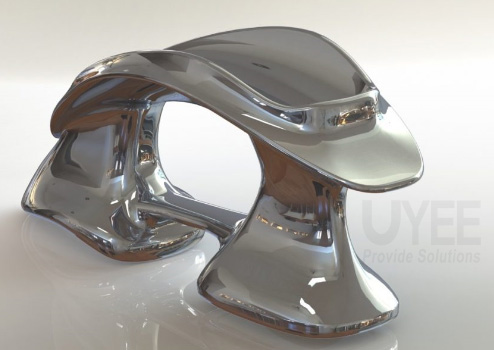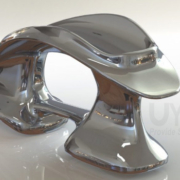Everything You Need To Know About Metal Rapid Prototyping
The machining of parts is carried out with the help of computers capable of controlling the machinery. And with the emergence of CNC rapid prototyping machining, it was possible to automate this process thanks to the ease of control by a computer program with minimal human intervention.
Its use expands to assembly operations, inspection, work on metal sheets, among others. It can be applied to any field, CNC or numerical control machining is used more than anything in metal or aluminum machining processes such as drilling or milling. Thanks to its automation capabilities, manufacturing proceeds at an accelerated rate and produces more accurate results.
How did CNC machining come about?
CNC machining emerged in 1940 thanks to the work carried out by the American engineer John T. Parsons, who used punched cards as a position coordinate system to control a machine center. Eight years later, this system was presented to the US Air Force to be sponsored in the laboratories of the Massachusetts Institute of Technology (MIT).
By 1952, MIT created the first prototype of a CNC rapid prototyping machining and, shortly after, it was introduced into machine tool factories for the production of metal parts, while they continued their research to provide the programmer with the means necessary to communicate part machining instructions to machinery in an easier way.
Types of machines that work with CNC rapid prototyping
Among the most common CNC machines are milling machines, grinding machines, and lathes. Milling machines are automatic cutting machines capable of working even with metals. Lathes are automated tools that rotate on their axis to shape the material. Grinders, for their part, use abrasive discs to perform abrasive machining on metal or plastic. These machines are easy to program and are used in CNC machining projects that do not need as much precision.
Numerical control machining technology contains information related to the position where the machine parts are to be placed. Currently, most of these tools are connected to a computer network where they receive all the instructions.
Advantage
CNC metal prototype machining encompasses the processes of CNC turning, CNC milling, wire cutting and EDM, being ideal to satisfy the vast majority of needs in terms of product development, always starting from the geometry defined by a 3D file. Here are some of benefits:
- Highly accurate
- Obtaining tight tolerances
- Suitable for most materials
- Optimal surface finish.
- Low investment in setup costs
- Scalable volumes from 1 unit
- Production agility
CNC metal prototype machining applications
Thanks to the automation of CNC metal prototype machining, its use was extended to different industrial sectors such as wind power, aeronautics and even rail, where CNC milling machines perform the molding of landing gears and fuselage components. Many industries turn to the CNC metal prototype machining center to combine different operations on the same machine. Of course, it is necessary for it to meet the needs of roughing, semi-finishing and part finishing operations using multiple heads with automatic change.

Tempocast and Tempoform technology
Through these two processes, we can manufacture parts in Aluminum, Magnesium, and Zink or Zamak. This technology starts from a plastic prototype manufactured by 3D printing metal or resin CNC machining. With these cores we manufacture as many negatives as we need depending on the number of metal pieces to cast.
The negatives are made with a material called “plaster” that is deposited in a liquid state. After a drying process, it is prepared for the casting of the liquid metal and once it has been cast and hardened, the imprint is destroyed for remolding. This is the reason for manufacturing as many traces as parts to cast.
Tempocast technology allows us to obtain surface finishes and dimensional tolerances similar to aluminum injection. There is the possibility of making pieces from 50 to 1000 copies. The thickness of the piece has to be 1mm minimum. Piece dimensions from 10 x 10 x 10 mm to a maximum of 1500 x 1500 x 1000 mm.
The Tempoform process is identical to the previous one, but as an initial prototype, a faster and cheaper 3D printing metal is used to produce as many models as we need footprints. This technology is aimed at series from 1 to 50 pieces and with surface finish requirements similar to sand casting or sintering. The maximum dimensions of these pieces are 340 x 340 x 600 mm.

